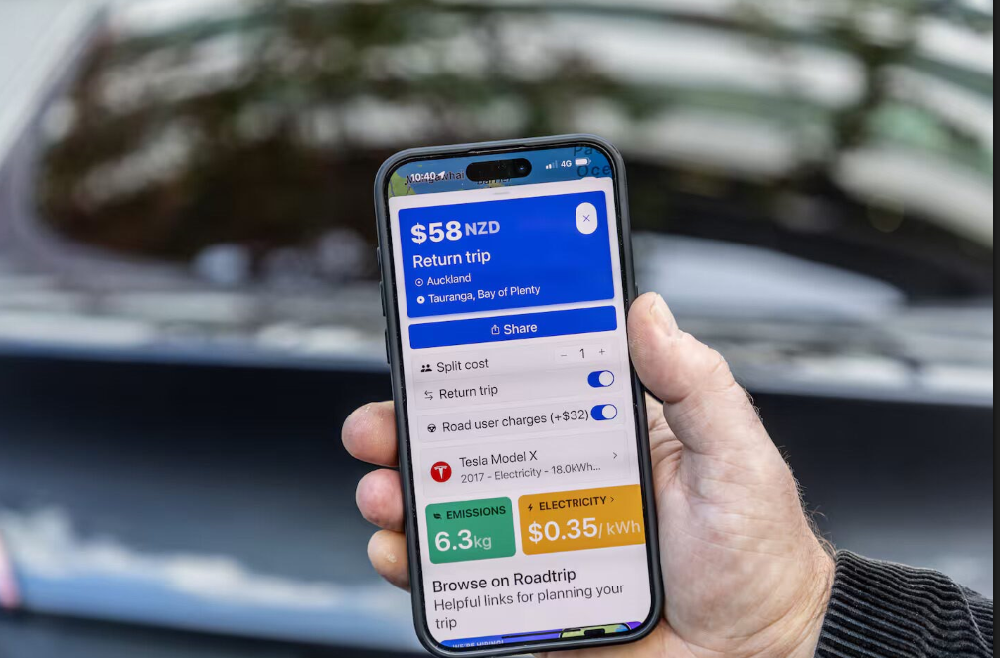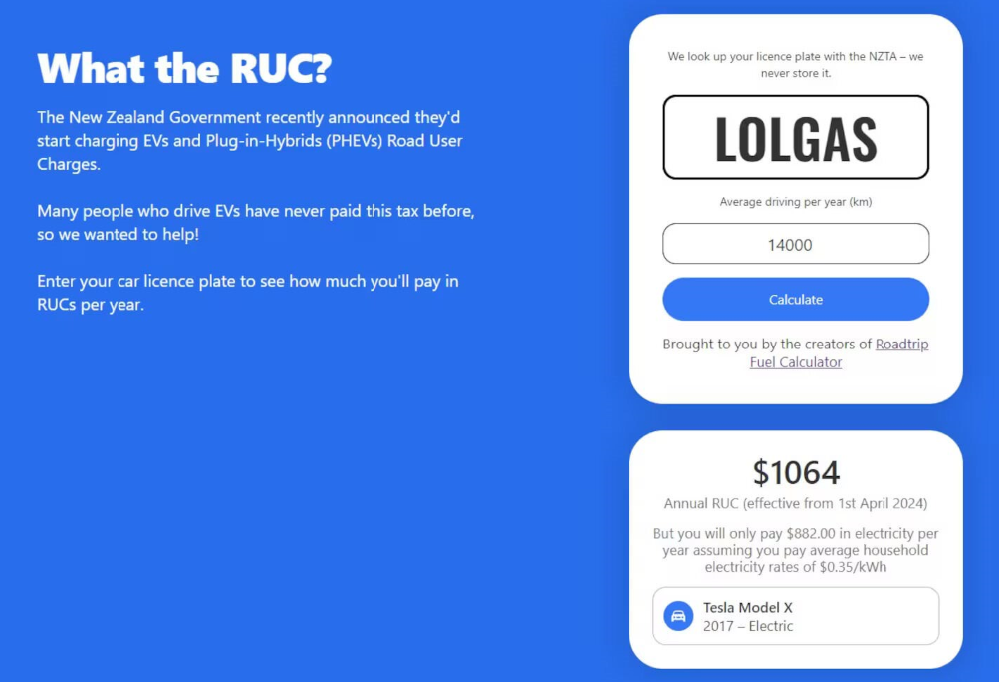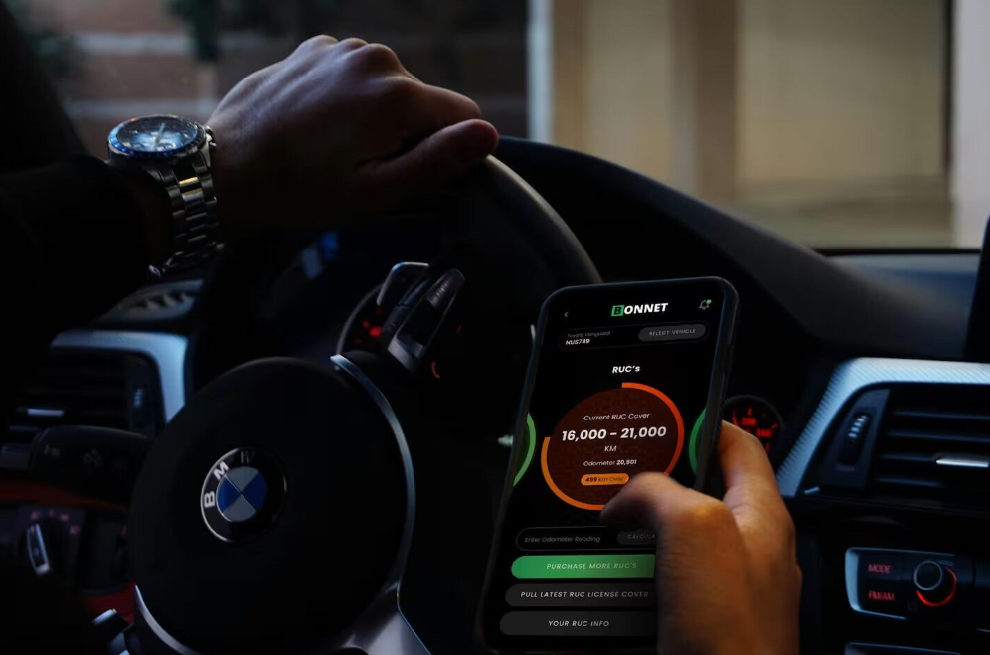Under the Bonnet
Bonnet, an app created by the Papamoa-based Steph Kennard, is already used by thousands of families for WOF, rego or service reminders, and recording service history.
Now it’s been upgraded to help EV and phev owners track their mileage for road user charges – albeit by manually entering their odometer reading.
Kennard says she’s on track to get e-RUC certification from NZTA in about a month.
That’ll mean you’ll be able to use Bonnet to auto top-up your road user chargers (blocks or “units” of 1000km must be pre-paid) each time you get down to a set limit, say 500km. She bills Bonnet as the only consumer-level app that will feature this capability.
Kennard says her app has around 29,000 users, covering about 55,000 vehicles.
The app is free in a basic version for individuals and families with one or two vehicles. Kennard makes her money from families with more than two cars (extra vehicles cost $4 per vehicle per month) and the 15 per cent of her user base who are commercial customers – which includes tradies, farmers with tractors, and carshare firm Mevo – which runs more than 200 vehicles – and a courier firm of the same scale. St John and Dunedin Airport have also been on a beta trial for the latest version of her app.

If you’re an EV or plug-in hybrid (phev) owner, the imposition of road user charges after April 1 could dent your wallet more than you think.
Emory Fierlinger, creator of the What the RUC website for calculating what you’ll pay per year in RUCs, and the Road Trip app for calculating the cost of individual jaunts (whether you’re petrol or electric) uses the cost of a drive from Auckland to Tauranga.
That’s a road trip of just over 200km as an example, selected because it’s a decent distance, but doesn’t require a top-up at a pricey public fast charger.

Today, in a Tesla Model 3, his app calculates the drive trip will cost you $12 (assuming you charge your car at home for the NZ average power price of $0.35 per kilowatt hour; public fast charges cost up to $0.82/kWh).
Road user charges (which will be $76 per 1000km, prepaid), will add $16 to that journey, meaning your Auckland-Tauranga jaunt costs $27 – still a lot cheaper than petrol, but the gap has significantly narrowed.
If it’s a round trip, then the cost will jump from $26 charging to $58 once you factor in $32 in RUCs.
(If you’re wondering, Roadtrip calculates a roughly comparable petrol car, the BMW 330i, would cost you $45 for Auckland-Tauranga one-way, or $90 return at $2.83 per litre. See some charts on lifetime EV vs petrol car ownership and running costs here.)
Meanwhile, What the RUC shows that a Tesla Model X that drives 14,000km per year will pay $882 a year (at a home charge average of $0.35/kWh) and incur $1064 in RUCs for that mileage.
If you’re only planning to buy an EV, you can run numbers on What the RUC using the licence plate LOLGAS.
Fierlinger says his app interrogates NZTA’s database to get information about a car based on its licence number. Getting the right specs is also important for his Road Trip fuel cost calculator when it’s estimating petrol costs.
But the information is not stored, for privacy reasons, he says.

Fierlinger (son of Xero and Upstock cofounder Philip Fierlinger) says Roadtrip has already been downloaded some 200,000 times since it was released in December 2021. Before RUC calculations, its primary purpose was finding the cheapest route in an age of spiking petrol prices. It can also be used to calculate a fuel-bill split with friends on a roadie.
Fierlinger and cofounder Ben Robertson have recently expanded the app into the UK and Australia.
In both those countries, regulators have recently required retailers to publish the petrol pricing online – making it easier for apps like Roadtrip to collate pricing data, and display at-the-pump costs at the likes of Mobile, BP and Coles Express service stations. (In NZ, we’ve got Gaspy, which relies on crowdsourcing.)
Roadtrip is free in its basic web and app versions.
